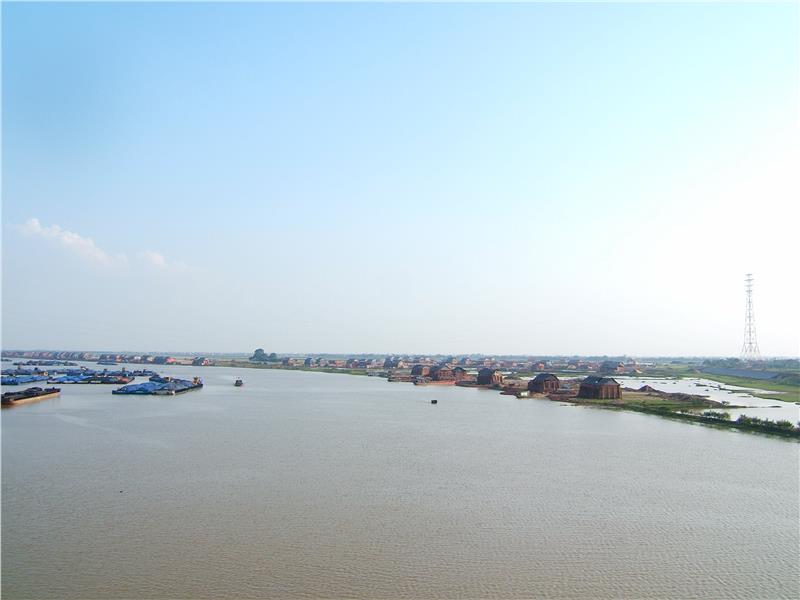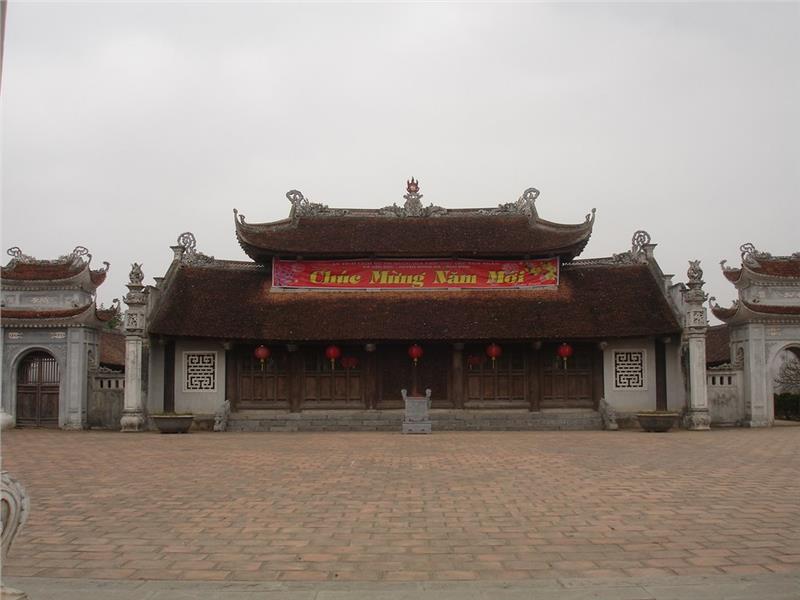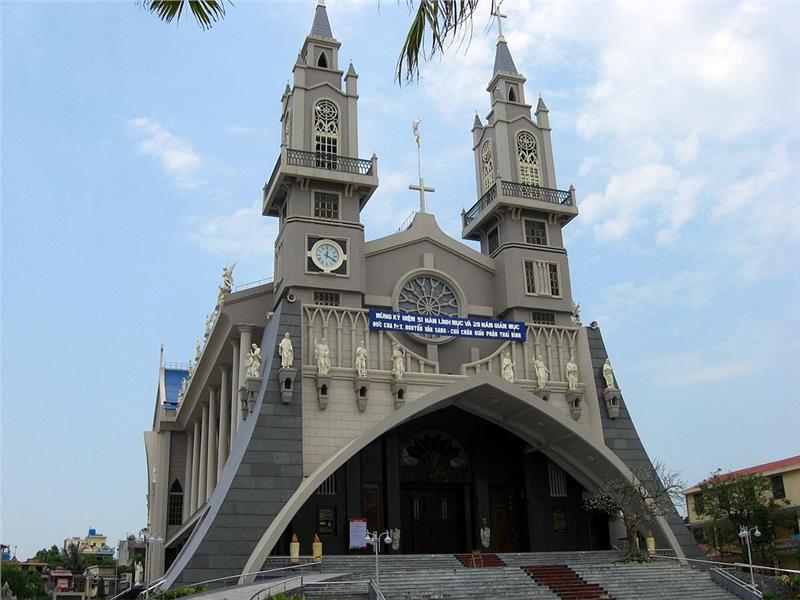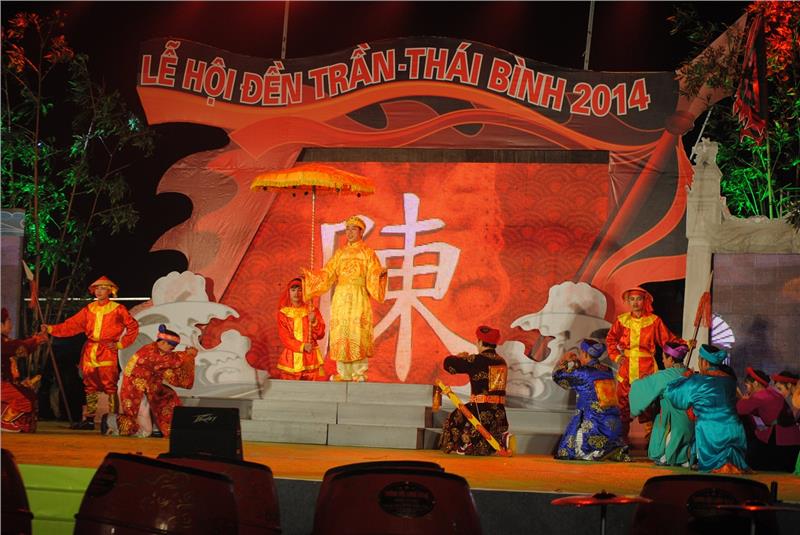Thai Binh shares border with 5 provinces and cities including Hai Duong in the north, Hung Yen in the northwest, Haiphong in the southwest, Ha Nam in the west and Nam Dinh in the west and southwest. The east is the South China Sea (the Gulf of Tonkin). According to the economic development plan, Thai Binh belongs to Red River Delta and is a granary of North Vietnam. The subsequent fertile soil was excellent for growing grains, especially rice. Thai Binh rice is acknowledged as the best strain in the North of Vietnam.

Thai Binh province is located in the southeast of Red River Delta Vietnam, from 20º17' north latitude to 20º49' north latitude, from 106º06´ east longitude to 106°39´ east longitude, the natural area is 1546km² (in 2003). The terrain is relatively flat with a slope of less than 1%; popular height of 1-2 m above sea level, lower from north to southeast. Pacific has a coastline of 52 km.Thai Binh terrain is relatively flat with a slope of lower than 1%, the popular height of 1-2m above the sea level, lower from North to Southeast. Thai Binh owns a long coastline of 52 km.
The province has 4 river running through, namely Hoa River, Luoc River, a branch of Red River and Tra Ly River. These rivers form 4 large estuaries: Diem Dien (Thai Binh), Ba Lat, Tra Ly and Lan. Due to their location adjacent to the sea, they are affected by tidal regime. In summer, water level rises quickly and the silt concentration is high. In winter, the water level falls, the silt concentration is negligible, so the saltwater affects the mainland deeply from 15-20km.
Located in the sub-tropical climate; Thai Binh climate is hot and humid in summers, rainy from May to September; cold and dry in winters from November last year until March next year. October and April is fall and spring but not markedly like countries lying on the tropical belt. The average temperature is 23.5 ° C. The number of sunshine hours is 1.600-1.800 hours. The relative humidity is 85 - 90%.
Thai Binh province is located in the monsoon tropical region, so it receives a large annual rainfall (1.700-2.200mm); the region is divided by large rivers, the branches of the Red River before running to the sea. On the other hand, due to the agricultural production, through many generations, people have created a dense river system. The total length of rivers in Thai Binh is up to 8492km, the average density is 5-6km/ km2 Direction of flows is mainly northwest - southeast. The north and northeast of Thai Binh is influenced by Thai Binh River.
In Thai Binh, there are no large lakes and lagoons, mainly small ponds interspersed with villages or coastal dikes. Thai Binh Sea is located in the Gulf of Tokin, a part of the South China Sea. The South China Sea connects with Pacific through wide straits. The Gulf of Tonkin is located in the northwest of the South China Sea, the continent sank under the sea, so the sea is shallow, and the deepest point is no more than 200m.

During the Chinese domination of Vietnam, Thai Binh belonged to Da Cuong (the land from Luoc River to the sea), Giao Chi district. Period of the 12 warlords, this land was base of Tran Lam warlord. Under the reign of King Le Thanh Tong, Thai Binh belonged to Son Nam area. By the end of Le Trung Hung to the first Nguyen Dynasty, this land was in Son Nam Ha area. In 1832, King Minh Mang of Nguyen Dynasty merged Thai Binh and Kien Xuong to Nam Dinh province, Tien Hung to Hung Yen province.
On March 21st, 1890, Governor-General of French Indochina issued the decree of the establishment of Thai Binh province, including Thai Binh, Kien Xuong (separated from Nam Dinh province) and Than Khe (separated from Hung Yen province). On November 28th, 1894, two districts of Hung Nhan and Duyen Ha of Hung Yen province were merged to Thai Binh province, while Luoc River was taken as the boundary between two provinces. Thus at the beginning, Thai Binh province includes 3 districts of Kien Xuong, Thai Ninh, Tien Hung and 12 other districts.
The township of Thai Binh was placed in Ky Bo commune, formerly district of Vu Tien. Later, Thai Binh's township was expanded into the neighboring district of Thai Binh town which became present-day Thai Binh City.
After 1954, Thai Binh province has 13 administrative units including Thai Binh town and 12 districts. June 17, 1969, Thai Binh province merged two districts Dong Quan and Tien Hung into Dong Hung district; Hung Nhan and Duyen Ha districts into Hung Ha district; Quynh Coi and Phu Duc district into Quynh Phu district; Thai Ninh and Thuy An into Thai Thuy district; Vu Tien and Thu Tri into Vu Thu district. Thai Binh had 1 town and 7 districts. On April 29, 2004, Thai Binh town was moved int Thai Binh city.
In 2011, the population of Thai Binh was 1.786.000 people with the population density of 1.138 people/ km². The population in rural area accounts for 90.1%, and the urban population accounts for 9.9%. The province is striving to achieve the urbanization rate of 22.3% in 2015, by 2020 the urbanization rate reaches 40%, the percentage of non-agricultural workers in the total workforce is about 67%.
Thai Binh has 286 communal administrative units consisting of 10 wards, 9 districts and 267 communes. Thai Binh is divided into 7 districts and 1 city. People’s Council in Thai Binh is the state power in the province, representing for the aspirations and rights of people desire and the rights of people. The People’s Committee elected by the People’s Council is the executive body of the People’s Council, the administrative agency of the state in the city and district which is responsible for the implementation the constitution, laws, documents of the state.

In 2014, gross regional domestic product (GRNP) reached 38,341 billion (up 7.83% over 2013), the year with the highest growth rate in recent 4 years and higher than the overall growth of the country (5, 8%). The total value of production is estimated to increase 8.82%. The total value of production was estimated to increase 8.82%. Thai Binh economy shifted positively.
The industrial production value reached 33.840 billion dong, an increase of 11.4% compared to 2013. There are 126 out of 144 projects in industrial zones put into operation bringing the production value of 12.566 billion dong, an increase of 11.3% over 2013. Total retail sales of goods and services in 2014 reached 25.639 billion dong, increasing by 13.48% over 2013. The total state budget revenue in 2014 was estimated at 12.115 billion dong (155% of the estimates, an increase of 8.3% in 2013). The domestic revenue reached 4.053,6 billion dong (an increase of 32.4% against the same period). The total state budget expenditure in 2014 was estimated at 12.085 billion dong (160% of the estimates, an increase of 6.8% in 2013). In which economic development expenditure reached 5.022,6 billion dong. Export turnover reached 1.168 million USD, up 17% over 2013. Import turnover reached 1.190 million USD, up 27% over 2013. The province creates new employments for 32.200 labors; the poverty rate fell to 3.32%.
In 2015, the province strives to increase the gross regional domestic product to 8% over 2014; the total investment of social development to 8,2%; export turnover to 12,6%, state budget revenue to 8.618,9 billion dong; and strives to have more than 130 communes and 1 district reaching the national standard of new rural construction; to decrease the poverty rate. Continuing to form the economic zone along the sea in 2 districts Tien Hai and Thai Thuy with the area of 20.580ha (including 30 communes in 2 districts Thai Thuy and Tien Hai), in which the natural area is 21.583ha and the rest is wetland area of around 9,000 hectares. Thai Binh is striving to become the industry province in 2020.
Education and training, and Science Technology are maintained and developed. In the academic year 2012 - 2013, Thai Binh was one of 5 first provinces in the country making universal preschool for 5-year-old children; the rate of student graduating High School is high; the number of students passed in universities and colleges ranks the second nationwide.

There are nearly 82 unique festivals, 16 types of singings and dances, and games such as Cheo singing in "Khuoc village", water puppetry in Nguyen Xa village (Dong Hung) and Bach Thuan Botanical Garden (Vu Thu). Cultural tourism development associates with festivals, visiting Keo Pagoda, Mau Doi temple in Dong Hai commune, Quynh Phu, Tien La temple, ecotourism associates with building Con Vanh tourist area, craft villages (Dong Xam, Hong Thai - Kien Xuong...), coastal tourism (Dong Chau - Tien Hai), especially Con Den resort being built in Thai Do commune, Thai Thuy, Thai Binh. In addition, Thai Binh is the hometown of great celebrities over times. In the feudal period, this place gave birth to outstanding celebrities such as General Vu Thi Thuc Nuong (the 1st century) - a talented woman general under the period of Trung sisters, Ly Bon or so-called Ly By who is known as King Ly Nam De, Tran Lam warlord, Le Quy Don, so on.
During and after the August Revolution, celerbrities in Thai Binh consists of Hoang Van Thai, Vu Ngoc Nha, and Pham Tuan. Hoang Van Thai (1915 - 1986) is the General of Vietnam People's Army Forces, first Chief of General Staff, Deputy Minister of Defense, as well as Member of the Central Committee of the Communist Party of Vietnam. Vu Ngoc Nha (1928 - 2002) is one of 4 legends in the Vietnam Intelligence as well as a major general of Vietnam People's Army Forces. And, Pham Tuan, the pilot, the first cosmonaut of Vietnam and Asia flying into space in 1980 in the Soviet Intercosmos program. He was also one of the few foreigners to be awarded the title Hero of the Soviet Union.

Dong Chau beach is located in Tien Hai district, about 35km far from Thai Binh City. The tourist area includes the coast of Dong Minh commune; Cua Lan and 2 islands of Con Thu and Con Vanh. The area situates in a large land, its center is Dong Chau beach with 5km length. Here, it has formed a system of hotels, resorts to meet the demand of tourists. In addition, coming to Dong Chau, tourists can visit Nha Ba temple worshiping wife of a King under Song Dynasty in China who helped Tran dynasty in the battle against Mongol invaders and this is also the base of Northern Committee before August Revolution.
Located about 7 km from the mainland, Con Thu and Con Vanh emerge as two blue waves at sea. Con Thu with the white sandy beach, green pine and casaurina forests, and the dreaming small beach is an ideal attraction for swimming, picnic, relaxing on boat with games such as fishing, windsurfing, and beach volleyball. Mangroves in Con Vanh are home to rare species of birds such as Co Thia (Platalea minor), pelicans, gulls... Every year, it has already attracted many visitors to here in order to visit research and explore. Con Vanh is considered a place with many favorable potential to develop into an ideal and attractive ecotourism. This is an alluvial ground of nearly 2000 hectares area, the relatively flat terrain, located in the east of Nam Phu commune (Tien Hai), adjacent to Con Thu in the north, Ba Lat estuary in the south and the South China Sea in the east.
Con Vanh belongs to Red River Delta Biosphere Reserve (recognized by UNESCO in 2004), located in the continous system of coastal mangroves stretching from Ninh Binh - Nam Dinh - Thai Binh. It has a diverse mangrove ecosystem with many plants as Su (Aegiceras corniculatum), parrots, cypress, pine, and over 200 species of valuable seafood and many rare species of birds. Thanks to PAM Dyke and 4 new bridges connecting river's branches, traveling to Con Vang today is more convenient and easier. Con Den Ecological Tourist Area is located about 3km from the mainland in Thai Do commune, Thai Thuy district, Thai Binh. It is about 40km far from the city center of Thai Binh. This area still keeps the wild features of the most beautiful island in the North Vietnam with coastal mangroves, straight casuarina groves and untouched coconut mangroves.
Bach Thuan garden village is located about 10km far from Thai Binh city. This is a fertile garden village, the village's edge is an alluvial ground used for mulberry growing, silkworm raising. Coming to Bach Thuan, visitors seem to get lost in a miniature park with all colors; along 2 roadsides are the green of apple trees and Sophora japonica. Nature has endowed Bach Thuan with favorable conditions for developing traditional gardens; there are enough four-season fruits: apples, guavas, oranges, lemons, persimmons, bananas, beside the orchard are the garden landscape, bonsai. Bach Thuan is also an ancient village, typical for villages in the North Delta. It also owns Tu Van Pagoda and Bach Tinh pagoda recognized as historical relics, tourist attractions for visiting and sightseeing. Domestic and foreign tourists are interested in landscape and ecological environment in Bach Thuan Garden Village.
Festival

Referring to Thai Binh festivals, people often immediately think about Tran Temple festival and Keo Temple festival. These are 2 large and famous festivals in Thai Binh. Tran temple festival in Thai Binh: Thai Binh is the land where the career of Tran Dynasty was started and developed, so the historical relics reflecting Tran Dynasty account for the most percentage of existing relics here. The relics spread across the province and is most concentrated in Hung Ha district. That is the temple and tombs of Kings Tran in Tam Duong village, Tien Duc commune, and Hung Ha district.
Annually, Tran Temple Festival is held from 13th -18th days of the first lunar month, with rich contents and many differences compared to other localities, attracting many people and tourists from everywhere. The festival aims to affirm and glorify the merits of building and defending the country of Tran Dynasty. It is an occasion to express the gratitude to the ancestors, kings, soldiers and generals of Tran Dynasty. Keo Pagoda Festival: Keo Pagoda is located in Duy Nhat commune, Vu Thu district and is one of the top scenic sites of Vietnam. Keo Pagoda Festival aims to commemorate Khong Lo Zen Master. The festival is held annually in 2 periods. Spring festival is held in 4th day of Lunar New Year and autumn festival is held from 13th to 15th of 9th lunar month. Through many ups and downs, until now, some rituals in Keo Pagoda festival has been reduced, but the rituals of the precession are basically unchanged.
